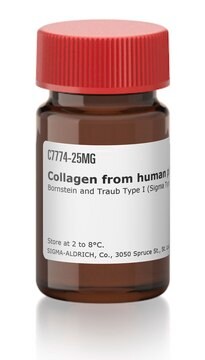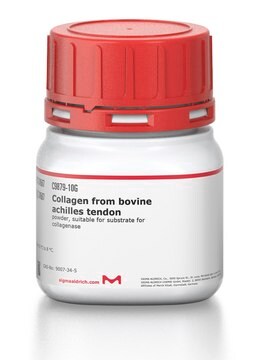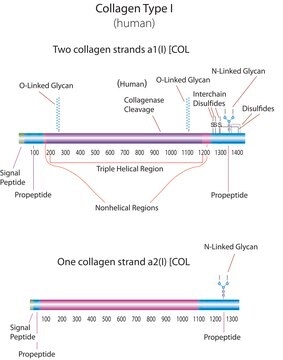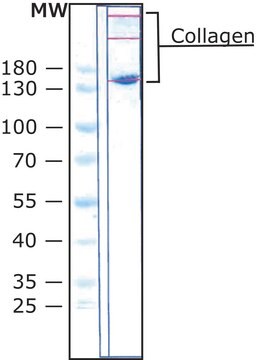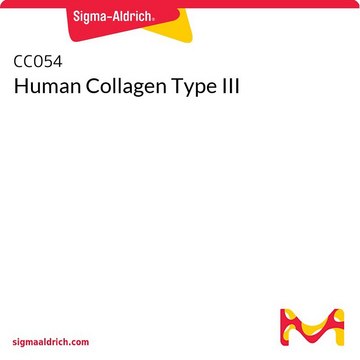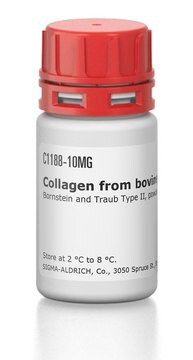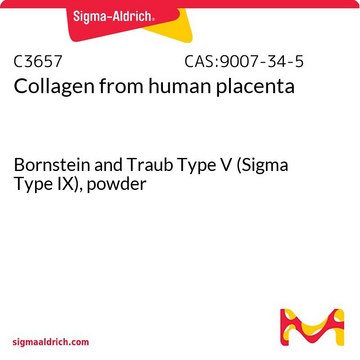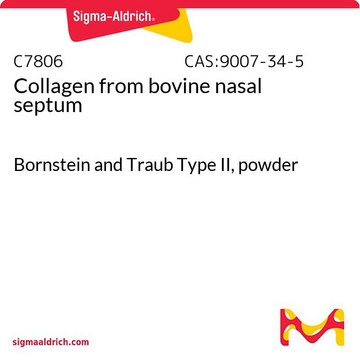C4407
Human Collagen Type III
from human placenta, powder, suitable for cell culture
About This Item
Recommended Products
product name
Collagen from human placenta, Bornstein and Traub Type III (Sigma Type X), powder
biological source
human placenta
Quality Level
Assay
≥90% (GE)
form
powder
technique(s)
cell culture | mammalian: suitable
impurities
HIV, hepatitis B and hepatitis C, none detected
solubility
aqueous acid: soluble
UniProt accession no.
storage temp.
2-8°C
Gene Information
human ... COL3A1(1300)
Looking for similar products? Visit Product Comparison Guide
Application
Components
Caution
Preparation Note
Analysis Note
Other Notes
Storage Class Code
11 - Combustible Solids
WGK
WGK 1
Flash Point(F)
Not applicable
Flash Point(C)
Not applicable
Personal Protective Equipment
Certificates of Analysis (COA)
Search for Certificates of Analysis (COA) by entering the products Lot/Batch Number. Lot and Batch Numbers can be found on a product’s label following the words ‘Lot’ or ‘Batch’.
Already Own This Product?
Find documentation for the products that you have recently purchased in the Document Library.
Customers Also Viewed
Our team of scientists has experience in all areas of research including Life Science, Material Science, Chemical Synthesis, Chromatography, Analytical and many others.
Contact Technical Service